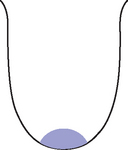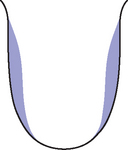Chapter 24 The Pale tongue is paler than normal. The pallor ranges from a very slight paleness to a paleness so extreme that the tongue is almost white. (See Plate 24.1 on p. P22) Box 24.1 summarizes the patterns underlying a Pale tongue. The Red tongue is redder than the normal colour. Although traditionally two shades are described (i.e. Red or Dark-Red), the clinical significance of these two is essentially the same. (See Plate 24.2 on p. P22.) Box 24.2 summarizes the patterns underlying Red tongue and tongue coating. The tongue-body may be Red in specific areas, especially the tip, the front third, the centre or the sides. A Red tip of the tongue (Fig. 24.1) indicates Heart-Heat (Full or Empty); if the tip only is Red, this indicates that the condition of Heart-Heat is slight, whereas if the whole tongue is Red and the tip redder it indicates that there is generalized Heat and severe Heart-Heat. (See Plate 24.3 on p. P22.) Red sides all along the edge indicate Liver-Heat (Fig. 24.2, see also Plate 24.4 on p. P22), while a redness on the sides only in the central section indicates either Stomach-Heat or Spleen-Heat (Fig. 24.3).
 TONGUE-BODY COLOUR
TONGUE-BODY COLOUR
TONGUE-BODY COLOURS
Pale
Red
![]()
Stay updated, free articles. Join our Telegram channel

Full access? Get Clinical Tree


TONGUE-BODY COLOUR


